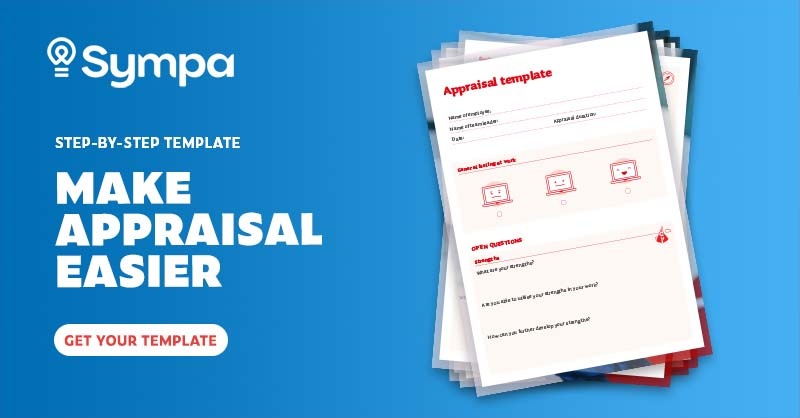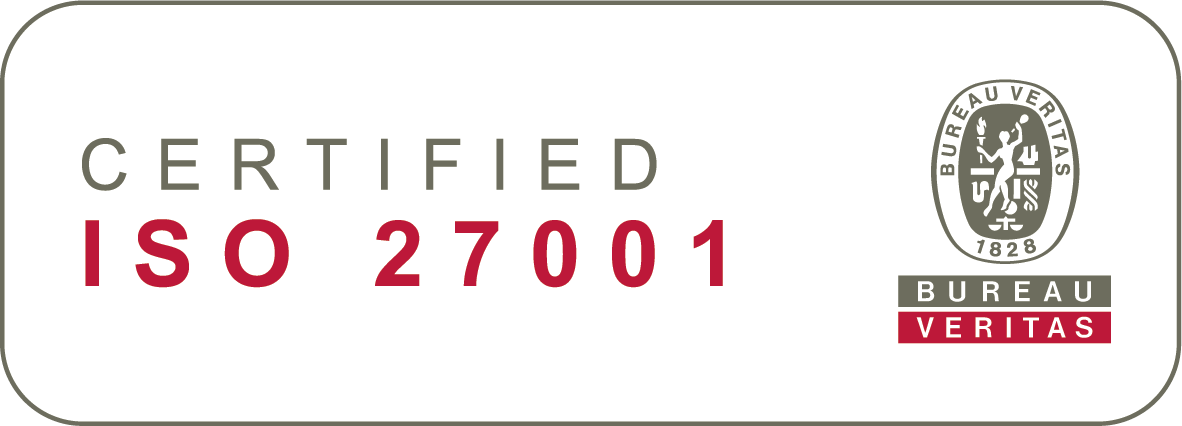Successful appraisals can often be characterised by holding open discussions and building trust in the process. They should be carried out in a manner that allows for a two-way personal dialogue. In practice, this means that the discussions are often held face-to-face. But how can you achieve the same result online in a world where remote working has increased, and many teams are scattered over different locations?
What would you say constitutes a successful performance appraisal?
Done right, appraisals are an excellent tool for building team growth as well as employee motivation. They can also create a clear path for employee development and strengthen manager-employee relationships.
As such, successful appraisals can often be characterised by holding open, honest discussions and building trust in the process.
Typically, appraisal meetings are carried out in a manner that allows for a two-way personal dialogue. In practice, this means that discussions are often held face-to-face. But how can you achieve the same result online, especially now that remote work has increased and many teams are scattered over different locations?
Shifts in our working practices also require new ways of thinking regarding leadership and performance management. Fortunately, there are many digital tools around to support remote leadership. But do online employee appraisals really work? Even with increased technical flexibility, is it possible to have the discussion remain personal and of equally high quality as a face-to-face conversation?
The answer to both questions is yes.
However, as with all digital tools, you have to be mindful of how you use them. Successful online employee performance reviews require good preparation. To help you get started, we gathered our top five tips for successfully transforming the appraisal format from face-to-face to online.

Here are our ten tips and advice to run successful online appraisals discussions.
1. Ensure a calm and personal setting
The requirements for good employee appraisals are the same online as they are for face-to-face meetings: both parties must ensure a good setting for the discussion.
It’s best to choose a time when neither is rushing from another appointment or moving fast on to the next. Ensuring that both parties find a quiet location will also make the whole process a lot nicer.
What’s more, you should encourage participants to turn on the video.
In some remote meeting situations, participants start without having their video connections on. This may be because it has become a habit in the organisation, the internet connection is bad, or participants may avoid presenting their home clothes and uncombed hair to others. However, seeing each other allows for more personal, transparent communication, so make sure to encourage the use of a video connection.
2. Careful technical preparation
A successful and efficient appraisal meeting requires both parties to prepare carefully. In addition to preparing the actual content, it is essential to ensure technical functionality in advance.
Make sure you know how to use the key functionalities of your conferencing tool of choice.
- Do the video and sound work for both participants?
- Can you share the screen views you want for joint viewing?
- Is your internet connection stable?
- Are you at a location where there are no auditory or visual distractions?
The main focus should be on the content of the discussion, not on the technical details. However, we have all been in meetings that start with technical difficulties. They eat up valuable time from the actual discussion and steer the focus away from what really matters.
3. Structure and steer the conversation with different tools
Online tools have a lot to offer when it comes to developing your appraisal process in general. Perhaps this might present you with the perfect opportunity to finally ditch the pen and paper and go fully digital?
Using the right HR tech makes it easier to create a clear and transparent structure for your discussion, and it’s also convenient to look at the chat agenda or appraisals questionnaire together on a shared screen. You can take advantage of pre-structured online questionnaires and form templates and edit them as you wish.
Easy access to other discussion-related materials stored in an HR system facilitates the review of goals and development at the individual, team, and even organizational levels.
Including some offline elements can be fun, too. Enjoying a cup of coffee during the discussion or agreeing on some other physical setting will create a similar context for both of you. This creates a feeling of being in the same space even though you are sharing it through an online connection.
4. Remember the main principles of an equal dialogue
The same main principles of a good appraisal discussion apply even when the discussion is moved online: a good appraisal process should be individual, consistent, fair, data-driven, and forward-looking.
While technology offers new possibilities, it is good to keep the dynamics of previous discussions in mind. If your team member has been satisfied with your previous appraisal review process, try to stick to the elements that made them successful in the first place also in the online format.
Pay particular attention to how the dialogue is being carried out online and who takes up the space. An experienced online conversationalist may suddenly lead the conversation and take up space from the more inexperienced. Be sure to give the other party enough to contribute.
Since social signals are harder to catch online, make sure you really encourage the other party to actively participate in the conversation and avoid unnecessary interrupting.
5. Take advantage of new possibilities
You get the most out of technology when you let it help you to handle the aspects of your conversations that require less of a human touch or use it to add value that offline tools don’t offer. For instance, you can set up reminders and follow-up to agreed goals, ask for feedback in the form of pictures and emoticons, or even gamify your conversation. The online format offers virtually limitless options on how to spice up your discussions in a suitable way.
When both parties are well prepared for the situation and are open to the possibilities the online format can offer, online appraisals can be very successful.
One of the best ways to improve your appraisal process is by encouraging a 360-degree feedback system. At the end of each discussion, ask if the employee is satisfied with the discussion, the agreed issues, and the technical execution.
Since online appraisals usually take less time and are less place-bound, it is possible to have them more frequently and in a more agile way. News ways of communicating may also pave the way for better manager-employee relationships.
6. Ensure Two-Way Feedback
An appraisal is a unique opportunity for managers and employees to discuss employee performance, satisfaction and targets in full confidence.
In an effective appraisal, both sides give and receive feedback, while encouraging each other to achieve better results in an open dialogue. Positive feedback is an ideal starting point, after which it’s easier to tackle issues that still need improvement.
Did you know?
Using an HR system like Sympa, managers and employees can refer back to the notes of the previous appraisals to motivate transparent and fair discussions.
7. Be consistent
By using the same appraisal form across the organisation, a company can record and store important HR information. This helps HR managers map current expertise within the company and determine what additional skills are still needed.
However, no appraisal form should be followed too categorically. Open questions by the manager and employee – ones that can’t be answered with a quick yes or no – will direct the conversation naturally to whatever matters most.
To help you get started with (more) effective appraisals, we’ve created this appraisal form template. You can modify, add and remove questions according to your company’s current situation and needs.
8. Give meaning to targets
Employees will be more motivated if the manager explains how their personal targets relate to the overall company strategy. The best targets are ambitious yet realistic. To conclude the discussion, it’s a good idea to ensure that there is a shared understanding of how and when the agreed targets should be reached.
9. Play fair
All employees must be treated fairly and equally in an appraisal. The same requirements should apply to everyone who shares the same responsibilities. Using a company-wide form is helpful in this context, too. Still, it’s crucial to keep in mind that all managers have their own evaluating tendencies – some are harsher, others more lenient – and all employees have their unique needs.
10. Keep it systematic
The 2022 Future of Work trends report shows that 28.5 % of companies prefer conducting annual performance reviews, whilst 23.5 prefer monthly check-ins.
There’s no right or wrong here. Yearly discussions are beneficial for long-term planning, while constant interaction helps keep the manager and employee on the same page. Regardless of how often appraisals take place, they should be systematic, honest and constructive.

Ready for better appraisal discussions?
Effective staff appraisals make employees feel that their work is meaningful and that they have the chance to use their expertise to reach shared targets.
All in all, taking some appraisal practices online might even provide you with an excellent opportunity to review your current appraisals practices in general.
What’s more, research by the Society for Human Resource Management shows that employees who have regular meetings with their managers are three times more likely to be satisfied with their jobs.
You now have everything you need to improve your appraisal process’ structure. The above advice should help your managers and employees to have more meaningful and valuable discussions.


